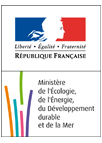Macro-economic model
GEMINI-E3
GEMINI-E3 is a Computable General Equilibrium model. Its development started in 1994 at the French Atomic Energy Agency under the supervision of Alain Bernard, part-time Economic Adviser and member of Conseil Général des Ponts et Chaussées. The model is currently developed and managed in collaboration between French Ministry of Equipment and EPFL (REME).
GEMINI-E3 has been specifically designed to assess world climate change policies, in particular the effects of the Kyoto Protocol, both at the microeconomic and the macroeconomic levels. It is a multi-country, multi-sector, dynamic model incorporating a highly detailed representation of indirect taxation. It has been thoroughly used since 1995 to analyze a wide range of questions linked to energy, environment and economic growth. GEMINI-E3 runs in annual steps mainly from the base year 2001 to 2025 though some longer-term scenarios -up to 2050- have also been simulated. The present version of the model is the fifth one, much more detailed that the initial version, and capable of assessing intra-European and domestic policies such as the directive on quotas, project of directive "energy-climate" and the determination of carbon value. A new version, GEMINI-EMU, has been developed to specifically assess intra-European macroeconomic policies but also relevant for the appraisal of climate change scenarios.
Regions
The version of GEMINI-E3 used for this application includes 14 regions: France, Germany, United-Kingdom, Italy, Spain, Poland, Other European Union Countries, United States of America, Japan, Canada+Australia+New Zealand, Russia, China, Brazil, Rest of the World.
Sectors
GEMINI-E3 describes five sectors linked to energy products: coal, crude oil, natural gas, refined petroleum and electricity. 14 other sectors complete the sectoral disaggregation: agriculture, forestry, mineral products, chemical, metal and metal products, paper and publishing products, other transport, sea transport, air transport, consumer goods, equipment goods, services, dwellings.
Economic Rationale
Assessing the environmental spillover effects of the various economic activities and the different policies aimed at controlling their cost for the collectivity is now a common task of economists, in particular those involved in advising Governments and public organizations.
Some kinds of pollution have a limited scope, concern a limited number of firms and are not able to affect international trade significantly. For them, resorting to the usual tools of microeconomics such as cost-benefit or cost-efficiency analysis is sufficient. In the language of theoreticians, partial-equilibrium is the relevant framework. Some other kinds of pollution are more pervasive and appear in most human and economic activities, and this is especially the case of Greenhouse Gas emissions. Close interactions between sectors, between countries and between periods require a global approach in assessing climate change policies. The tool that proved to be the most suitable for this task is the Computable General Equilibrium Model. Beyond all these interactions, some very special features of climate change modeling are the major role of taxation and the associated distortions. Distortions may have other origins like market rigidities and associated unbalances. Assessing environmental policies through economic and fiscal tools may then only be contemplated with a global approach.
It is the aim of the GEMINI-E3 team to promote
such a tool, with the constant concern for rigour and transparency. The team
now has ten years' experience in this field and the present version of GEMINI-E3 is
the fifth one. Numerous publications and communications via seminars,
conferences and working groups, several collaborations with other research or
modelling teams paved the way for the present status of GEMINI-E3 in the
"market" of CGE models. GEMINI-E3 is an uncompromising General
Equilibrium model, with neo-classical demand and supply functions, a number of
markets exactly equal to the number of goods and a single Walras Law for all
countries. This does not mean that non-competitive behavior is necessarily
discarded: different scenarios assuming wage rigidity and a rationing of
households' labor supply by demand from firms have been assessed according to
the usual scheme of "classical unemployment". But the main focus and
originality of the model is the measurement of welfare. Measuring costs is the
basic endeavor of economists, and welfare cost is a yardstick in assessing and
comparing policies.
The measurement of welfare costs is specific
because of the intertwined effects of domestic policies and changes in
international markets resulting from any concerted environmental strategy at
the world level. The welfare cost associated to the latter is the gain or the
loss from "Terms of Trade", mainly but obviously not exclusively those resulting from
the reduction in fossil energy prices brought about by the decrease of demand.
Separating the two costs, the "domestic" one and the
"imported" one, is highly desirable in order to understand the
mechanisms at work clearly. And this, inasmuch as their respective importance
varies according to the level of emissions abatement, and then according to
time: it is well known that the domestic cost follows a quadratic law, while
the imported cost follows a linear law. Then the latter is usually bigger than
the former in the early stages of abatement and on the contrary smaller when
abatement becomes very important.
The total welfare cost is not the only relevant
indicator of policy assessment: the marginal cost of abatement, i.e. the
marginal welfare loss resulting from additional unit abatement is also a very
useful tool to optimize abatement policies. It is a general -and most of the
time underemphasized- observation that the marginal abatement cost differs from
the pollution tax, because of fiscal or economic distortions. The GEMINI-E3
model -in particular the presentation of scenario results- stresses this
comprehensive analysis of costs, including an important ingredient that is the
Marginal Cost of Public Funds.
GEMINI-E3 has experienced many changes from the
beginning, though it has kept the same theoretical platform, and is intended to undertake new developments in order to cope with aspects that have been
neglected up to now or that need a more sophisticated modeling. An example
of the first case is equity, with the desirable consideration of different
categories of households, according to their income or their characteristics
(such as the region of residence, the size or the generation of the family).
The availability of a database on the American Consumer, based on the surveys
of the BLS, allows us to contemplate such a development.
GHG Emissions
GEMINI-E3 describes the main Greenhouse Gases: CO2, CH4, N2O and fluorinated gases, for non Carbon Greenhouse Gases information is obtained from the Energy Modeling Forum Working Group 21 directed by Francisco C. de la Chesnaye and John Weyant and from the recent work done by US EPA.
Some References
A. Benard and M. Vielle, Assessment of
European Union transition scenarios with a special focus on the issue of carbon
leakage. Energy Economics,
Article in Press.
A. Bernard, M. Vielle, Résultats
des simulations réalisées avec le modèle GEMINI-E3 pour la Commission du CAS
chargée de la valeur tutélaire du carbone. in La Valeur Tutélaire du Carbone,
Tome 2 : Exercices de Modélisation et Contributions, Alain Quinet, Centre
d'Analyse Stratégique Septembre, 2008.
A. Bernard, A. Haurie, M. Vielle, and L. Viguier , A two-level dynamic game of carbon emission trading between Russia, China, and Annex B Countries. Journal of Economic Dynamics and Control, 2008, Volume 32, Issue 6, pp 1830-1856.
L. Drouet, A. Haurie, F. Moresino, J.-P. Vial,
M. Vielle, and L. Viguier, An Oracle Based Method to Compute a Coupled
Equilibrium in a Model of International Climate Policy. Computational Management Science,
2008, Volume 5, numbers 1-2, February, pp 119-140.
A. Bernard and M. Vielle, GEMINI-E3, A
General Equilibrium Model of International-National Interactions between
Economy, Energy and the Environment. Computational Management Science, Volume 5,
number 3, May 2008, pp 173-206.
M. Vielle, L. Viguier, On the climate change
effects of high oil prices Energy Policy, Volume 35, Issue 2, pp 844-849, February, 2007.
L. Viguier, M. Vielle, A. Haurie and A.
Bernard, A Two-level Computable Equilibrium Model to Assess the Strategic
Allocation of Emission Allowances Within the European Union Computers & Operations
Research, Volume 33, Issue 2, pp 369-385, February 2006.
A. Bernard, M. Vielle and L. Viguier, Burden
Sharing Within a Multi-Gas Strategy The Energy Journal, Special Issue
Multi-Greenhouse Gas Mitigation And Climate Policy, pp 289-304, 2006.
A. Bernard, M, Vielle, Measuring the Welfare
Cost of Climate Change Policies: A Comparative Assessment Based on the
Computable General Equilibrium Model GEMINI-E3 Environmental Modeling and Assessment, Volume
8, Number 3, pp 199-217, September, 2003.
A. Bernard, L'utilisation des
modèles d'équilibre général calculables pour l'analyse coût-bénéfice et
l'évaluation des politiques Economie &
Prévision, N°136, octobre-décembre, 1998/5, pp 3-18.


